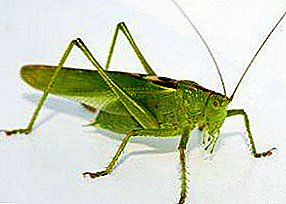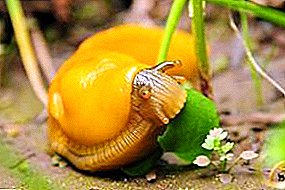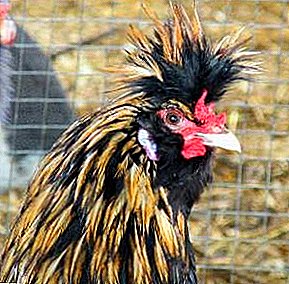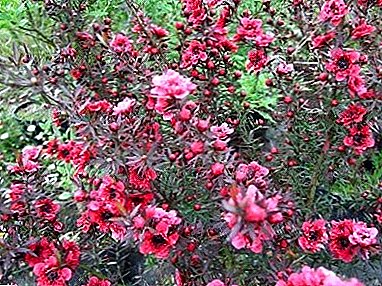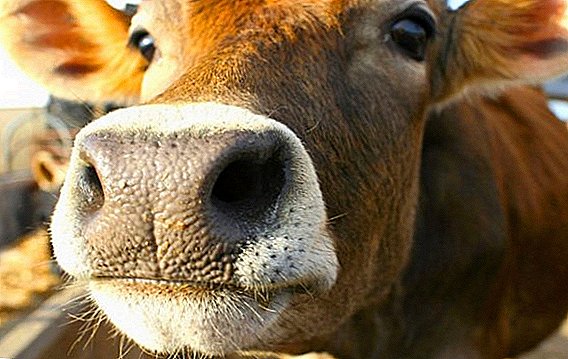 Foot and mouth disease is a dangerous disease of cattle, it is very contagious, and therefore it spreads quickly, has negative consequences not only for agriculture, but also for the entire economy. FMD is transmitted from animals to humans, fortunately, it is often cured without a trace, but exceptions also happen, so you should know how to recognize this disease in animals in time.
Foot and mouth disease is a dangerous disease of cattle, it is very contagious, and therefore it spreads quickly, has negative consequences not only for agriculture, but also for the entire economy. FMD is transmitted from animals to humans, fortunately, it is often cured without a trace, but exceptions also happen, so you should know how to recognize this disease in animals in time.
What is this disease
Foot and mouth disease is a viral disease that occurs in all artiodactyls, including wild ones, but cattle are most susceptible to it. Moreover, animals are sick, regardless of age, although young animals become infected faster and suffer disease more. It should be noted that foot and mouth disease is spread throughout the world. 
Pathogen, sources and routes of infection
The causative agent of FMD is a tiny virus of complex protein composition, its diameter is only 10-30 nanometers. It belongs to RNA-containing viruses, the genus - rhinoviruses, the family - Picornaviridae.
According to its properties, FMD virus is divided into seven types - O, A, C, CAT-1, CAT-2, CAT-3 and Asia-1, each of which, in turn, has several variations. The number of variants is constantly changing as the virus evolves and new ones appear.
And if an animal has had some type of FMD disease, this does not exclude infection with another type of virus.
Sources of this virus:
- diseased animals, including those that are in the incubation period;
- virus carriers (those cows that have already had a disease, can be dangerous for more than a year).
In sick animals it is possible to detect the virus in milk, saliva, urine and feces, therefore, the causative agents of foot and mouth disease without any problems get into the external environment. The result of this is contamination of barns, walking yards, various equipment, feeding troughs, pastures, reservoirs, and fodder.
Attendants, vehicles, other pets, such as cats, dogs, birds, can passively carry the virus on themselves. Insect parasites can also be dangerous.  FMD virus in the environment lives quite a long time. So, on pastures in the mountains, he may well be active until the next season, on animal fur lasts for 50 days, on human clothing - up to 100 days, and indoors - up to 70 days.
FMD virus in the environment lives quite a long time. So, on pastures in the mountains, he may well be active until the next season, on animal fur lasts for 50 days, on human clothing - up to 100 days, and indoors - up to 70 days.
Did you know? There is an action called "Cow Parade". During its implementation, fiberglass cow statues painted by artists are installed on city streets or galleries, after which these creations are sold and the proceeds are sent to charity.
A cow can become infected in the following ways:
- when eating through the oral mucosa;
- through the damaged skin of the udder and limbs;
- by airborne droplets in the presence of a number of sick individuals.
Incubation period and signs of foot and mouth disease in cows
The incubation period lasts from 2 to 7 days. The disease is always acute. Cattle can have two forms of foot and mouth disease - benign and malignant.
Consider the signs of a benign form with the development of the disease:
- Poor appetite and slow chewing gum.
- The temperature rises to 40.5-41.5 degrees, the mucous membrane of the mouth is hot and dry.
- Rapid pulse and breathing.
- Complete rejection of food and a sharp decrease in milk production.
- On the second or third day from the onset of the disease - the appearance of bubbles (aft) in the mouth, in the nose and on the wings of the nose, the liquid inside them is clear at first, then it becomes cloudy.
- The appearance of erosions at the site of burst aft.
- Abundant drooling, difficulty eating feed, thirst.
- Puffiness of the skin in the hoof area, there is lameness.
- Tachycardia and arrhythmia are possible, as well as nervous disorders.
The majority of diseased cows recover after 3-4 weeks from the moment of infection, subject to good care and adequate treatment. Mortality in this case is quite small - up to 0.5%.  Signs of the malignant form of FMD, in addition to aphtha mucous membranes and skin, are as follows:
Signs of the malignant form of FMD, in addition to aphtha mucous membranes and skin, are as follows:
- Serious cardiac abnormalities, including heart failure.
- Disturbances in the circulatory system.
- Depression, convulsions.
- Shortness of breath, wheezing.
Unfortunately, this form is characterized by high mortality, up to 70%.
Foot and mouth disease in malignant form is observed most often in young cattle. Calves suffer a little differently: at the age of two months, they have no aphthae, but acute gastroenteritis, sepsis, myocarditis, and severe depression are present.
Sick babies do not want to suck up colostrum. They can already die in the first day, and the mortality rate can reach 60%.
Diagnostics
Diagnosis of foot and mouth disease is based on:
- epizootological data;
- clinical signs of the disease;
- pathological changes at the opening;
- laboratory research.
Important! At the first sign of this dangerous disease, take immediate measures for early diagnosis.
When cows or calves develop a rash in the mouth, in the area of the udder, on the extremities, salivation, lameness, reluctance to chew food, this should raise suspicion of foot and mouth disease.  For laboratory research, walls of aft are selected that have not yet burst (at least 5 grams). The collected material must be placed in a preservative, which is a mixture of chemically pure glycerin and a phosphate buffer solution pH 7.4-7.6, taken in equal amounts.
For laboratory research, walls of aft are selected that have not yet burst (at least 5 grams). The collected material must be placed in a preservative, which is a mixture of chemically pure glycerin and a phosphate buffer solution pH 7.4-7.6, taken in equal amounts.
Next, the container with the preservative is sealed tightly and, after being wrapped in cotton wool, is closed in a metal waterproof container. All this is delivered to the relevant veterinary services, strictly observing safety measures.
In the laboratory, using various specific reactions, the presence of a virus that causes FMD is established. If a virus is detected, then biological studies are carried out to help determine the type and variant of the causative agent.
It should be noted that the appearance of bubbles with liquid in the oral cavity and on the udder of the cow does not always indicate the presence of a dangerous disease, the same sign is characteristic of stomatitis and dermatitis, smallpox, and plague.
The infectious diseases of cattle also include: mycoplasmosis, anthrax, necrobacteriosis, endometritis, nodular dermatitis, chlamydia, brucellosis, leptospirosis, anaplasmosis, actinomycosis.
Pathological changes
In the case of a benign course of the disease, as we have already noted, the death of sick animals occurs very rarely. In the autopsy examination of the dead individuals, there are aphthae and erosion on the mucous membrane of the mouth, in the area of the scar, and also on the skin of the nasal mirror, where there is no hair, lips, nipples, rim and inter-hoof fissure.
Sometimes these lesions are located around the anus.  But in the case of malignant FMD, in addition to the above signs, changes in skeletal muscle and heart muscle are found. It has been established that the main cause of death of sick animals is myocardial damage.
But in the case of malignant FMD, in addition to the above signs, changes in skeletal muscle and heart muscle are found. It has been established that the main cause of death of sick animals is myocardial damage.
When an external examination of the heart and incision of the myocardium is performed, small foci of yellow-gray lesion in the form of spots or stripes of various sizes and shapes are found.
In the muscles of the back, limbs, tongue and some others, muscle fiber lesions can be found in the form of yellowish gelatinous serous infiltrates.
In severe cases, during the autopsy, hemorrhages are detected, which are concentrated in the digestive tract, lungs, kidneys, liver, and even in the brain and spinal cord. You can also find serous infiltrates in the subcutaneous tissue, connective tissue, on the walls of the intestine.
Treatment of foot and mouth disease in cows
Due to the fact that there are a large number of varieties of FMD virus, which also constantly mutate, do not produce any veterinary preparations for the treatment of this dangerous disease. In this case, the main thing - good care and combat symptoms.
General events
The first step is to isolate diseased animals in a separate room. It should be clean, with good ventilation and a comfortable temperature. A soft, clean bed with hygroscopic properties should be placed on the floor. It can be peat, sawdust.
Important! During the period of illness, cows are very vulnerable to other viruses and infections, so they need cleanliness and care, so as to avoid the appearance of secondary infection.
Feed sick cows need only soft feed. It is recommended to give a talker of flour, green grass, high-quality silage. Be sure to provide animals with clean drinking water in sufficient quantities. 
Special means
An important aspect in the treatment of cattle is the treatment of affected areas with aphthae and erosion.
For the oral mucosa are used:
- 2 percent acetic acid;
- solution of potassium permanganate - 0.1%;
- furatsilin - 0.5%;
If the lesions are extensive and cause pain, then anesthesia is necessary so that the animal can eat normally.
To do this, make the following mixture:
- novocaine;
- anesthesin;
- copper sulphate.
The ratio of ingredients: 1: 1: 2, and as a basis using petroleum jelly or fish oil. This ointment is applied to the affected areas in the mouth shortly before meals.
For processing of extremities, a mixture of tar and fish oil is used in equal proportions, and if significant inflammation is present, then iodine or streptocid is used in the solution of potassium permanganate.  You can take foot baths, for this take:
You can take foot baths, for this take:
- formaldehyde solution - 2%;
- caustic soda solution - 0.5%;
- Creolin or Lysol emulsion - 2-3%.
All this is added to special containers with clean water at a comfortable temperature and the cows are driven through them. All of the above foot procedures are carried out daily.
In addition to external remedies, use specific drugs for oral administration.
For this purpose, apply:
- immunolactone;
- lactoglobulin;
- serum from the blood of convalescents (these are individuals that have already been ill and recovered).
Did you know? In Australia, several decades after the beginning of breeding cows, the manure problem became acute: the local beetles could not process it, because they were tuned in to the feces of the marsupial animals. The way out was found, the dung beetles were brought from the African continent.
In severe cases, sick cows are given heart remedies for the normal functioning of the heart. To give strength, it is recommended to inject glucose intravenously or simply give the animal a glass of honey daily.
Prevention and vaccination of cattle
Dangerous diseases such as foot and mouth disease are easier to prevent than to cure. And now the anti-chastity measures around the world have led to the fact that in most territories there is a prosperous situation. Nevertheless, there are separate foci of the disease, so preventive measures are very important.  In matters of prevention of foot and mouth disease, there are 4 methods that are used in different countries:
In matters of prevention of foot and mouth disease, there are 4 methods that are used in different countries:
- Vaccination is not carried out, all infected and potentially infected individuals are completely eliminated.
- Immunization is carried out exclusively around the focus of the disease, and in the hearth the animals are destroyed.
- Conducted regular vaccinations of cattle for the purpose of prevention in areas bordering the lesion, in the hearth, all sick individuals are destroyed, and vaccination is done around it;
- Infected individuals are eliminated, intensive vaccination and quarantine measures are carried out.
It must be said that the first method is applied only in developed countries with a strong economy, since it brings considerable material damage. All the others are used taking into account the situation, geographical location and development of animal husbandry.
The preventive measures include the control of veterinary services at the borders of states, the constant implementation of measures aimed at improving the sanitary culture in livestock enterprises and among the population. In addition, control of the movement of animals, the supply of products and raw materials is necessary.
Important! FMD virus is resistant to many chemicals that are traditionally used to disinfect premises, for example, to bleach. It is best to treat infected barns with solutions of 2 percent formaldehyde and 1-2 percent caustic soda.
And finally, vaccination, which is carried out on many farms and cattle farms, is considered a very effective preventive measure against foot and mouth disease.  For its carrying out special hyperimmune serums, and also the vaccines received from blood of virus carriers are used. When a cow is vaccinated for the first time, then after 21 days, it forms an immunity that lasts for a year.
For its carrying out special hyperimmune serums, and also the vaccines received from blood of virus carriers are used. When a cow is vaccinated for the first time, then after 21 days, it forms an immunity that lasts for a year.
Summing up, let's say that foot and mouth disease is undoubtedly an extremely dangerous disease of cattle. It is very important to clearly know its first specific signs in order to take measures for treatment in time, because at the initial stage it is much easier to do this.
Moreover, early diagnosis and identification of a particular FMD virus will stop its spread over large areas. And preventive measures and vaccination will help to completely avoid such troubles. Take care of your cattle, as well as your own health!


